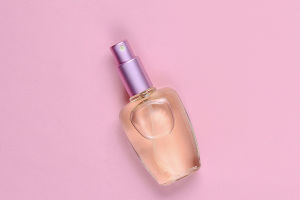Essential oils, extracted from plants through methods such as distillation or cold pressing, offer a range of benefits, including soothing the mind, improving skin health, and promoting better sleep.
Below is a brief introduction to five common essential oils, including their sources, main components, and applications.
1. Lavender Essential Oil
Lavender essential oil is derived from the flowers of the lavender plant. This oil is well-known for its gentle aroma and versatile properties. Its main components include linalool and linalyl acetate, which give lavender oil its relaxing and soothing effects.
Lavender essential oil has a wide range of uses. It is commonly used to alleviate stress, anxiety, and insomnia. Many people add a few drops of lavender oil to a diffuser before bedtime to help relax and unwind. Additionally, lavender oil has antibacterial and anti-inflammatory properties, making it useful for soothing minor wounds and burns.
2. Peppermint Essential Oil
Peppermint essential oil comes from the leaves of the peppermint plant and is known for its refreshing scent and strong stimulating effects. Its main components are menthol and menthone, which provide the oil with an invigorating property.
Peppermint essential oil is primarily used for boosting energy and relieving headaches. Its cooling effect can effectively alleviate headaches caused by tension or fatigue. Moreover, peppermint oil is also used to ease digestive issues and respiratory discomfort. It can be diluted and applied to the temples or stomach, or added to hot water for steam inhalation.
3. Tea Tree Essential Oil
Tea tree essential oil is extracted from the leaves of the tea tree and is renowned for its powerful antibacterial and antiviral properties. Its main components include terpinen-4-ol and 1,8-cineole, which provide tea tree oil with notable antimicrobial effects.
Tea tree essential oil is widely used in skincare. It is commonly applied to treat acne due to its ability to combat acne-causing bacteria. Tea tree oil can also be used to relieve fungal infections like athlete’s foot. When used, it should be diluted and applied to the affected area to avoid skin irritation.
4. Neroli Essential Oil
Neroli essential oil is derived from the blossoms of the bitter orange tree and is known for its distinctive sweet floral scent. Its main components include linalool and linalyl acetate, which give neroli oil its calming and soothing properties.
Neroli essential oil excels in skincare. It helps improve skin elasticity, reduce wrinkles, and soothe sensitive skin. Additionally, the aroma of neroli oil aids in alleviating anxiety and depression. It is often used in aromatherapy to uplift mood and relieve stress.
5. Ylang Ylang Essential Oil
Ylang ylang essential oil comes from the flowers of the ylang ylang tree and is favored for its sweet and intense fragrance. Its main components include ylangol and ylang aldehyde, which contribute to the oil's deep scent and soothing effects.
Ylang ylang essential oil is widely used for emotional regulation, particularly in relieving stress and anxiety. It helps uplift mood and promote relaxation. Ylang ylang oil also has a balancing effect on sebum production, making it useful in skincare products for managing oily skin.
In summary, these five essential oils each have unique characteristics and can address various needs. Whether for relaxation, invigoration, or skincare, they offer natural benefits. When using essential oils, it's important to dilute them and avoid direct application to the skin to prevent potential allergic reactions.
Choosing high-quality oils and appropriate usage methods is also crucial. It's hoped this information helps you better understand and utilize essential oils, enjoying the multiple benefits they provide.


